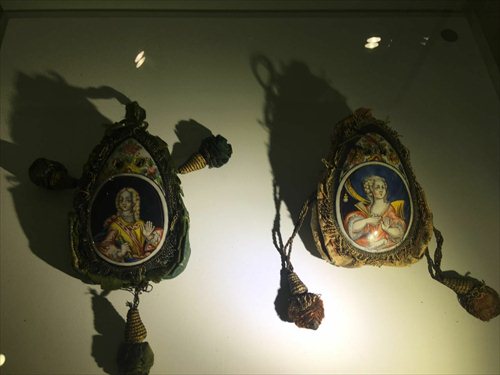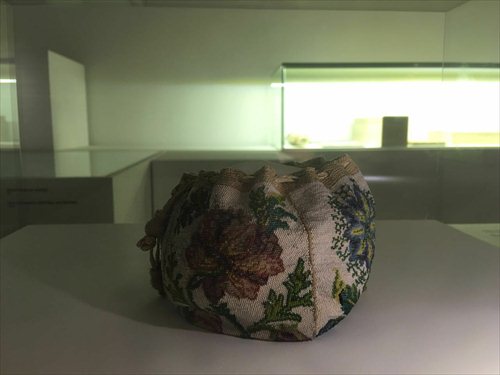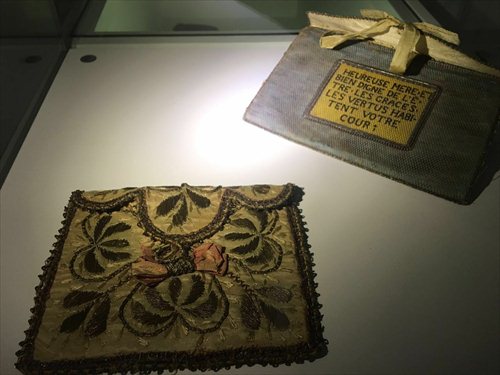What’s in the bag?
Exhibit explores the evolution and art of the purse
Recently the chi K11 Art Space launched a new exhibition titled Bagism: We Are All In The Same Bag, showing more than 300 original, high-fashion bags.
Curated by Elisabeth Azoulayand of France and Penny Liu of China, the exhibition offers a well-rounded interpretation of the accessory.
The exhibition's name is a tribute to John Lennon and Yoko Ono, who introduced the term in 1969 at a press conference in which they hid themselves inside of a bag. They could not be seen, only heard.
Their act was meant to declare the bag is no longer a mere accessory but a megaphone that conveys a message about removing obstacles of prejudice, like skin color or hair length.
What else could a bag tell if it could talk to us? These are the extended questions from Bagsim explored in the exhibition, which specifically focuses on history, feminism, celebrity and art.
Azoulayand told the Global Times that it was difficult to collect the bags from across the globe, and she hopes that their art and history can give more depth and meaning to this popular accessory.


Bagism: We Are All In The Same Bag showcases more than 300 original, high-fashion bags from around the world. Photos: Qi Xijia/GT
Linked to history
The first part of the exhibition looks into how bags are linked to history: how they evolved, how they've changed our lifestyles, and how they represent a female's position and feminism.
The show posits that the evolution of bags follows the evolution of fashion.
Between the 11th and 15th centuries, men's and women's garments were so closely fitted that they had no alternative but to carry additional things in their purses. They were attached to the belt and beneath the clothes with a chain or a string.
Made of fine fabrics and embroidered or adorned with precious stones, these intricately decorated objects were made to be proudly displayed as an indication of fortune and status. From this point it became a fashion item.
Somewhere around 16th and 17th centuries, the bag took a distinct feminine turn, as pockets were sewn onto men's garments, while women's pockets were removable. The 18th century saw a number of specific-purpose purses.
From the 17th and 18th centuries, purses made entirely from glass beads became the most striking accessory among the aristocracy.
The beads were tiny, and could only be sewn using horses' hair. An experienced knitter needed two full weeks to complete a beaded bag, and therefore owning one was considered a true luxury.
The exhibition also shows a pair of marriage bags.
It was tradition in various European countries to give purses containing money as a wedding gift.
These bags were made of silk and adorned with enamel depictions of the bride and the groom.
At the end of the 18th century, fashion turned toward more tightly fitting dresses.
Some bags were designed to be carried in the hand, and this is the beginning of the bags we know today.
Bags also indicate the change of women's roles in society.
The content in women's bags changed through the 20th century, especially with the women entering the workforce.
As women increased their participation in the world of work their demands on the variation of handbags grew.
"In the past women only took cosmetics with them and other little things, but we see in this period bags became bigger because women are having more complex social lives," Azoulayand said.

Celebrity and arts
The exhibition also features bags owned and used by celebrities, and visitors can also interact with a giant Lady Dior bag for an all-in-one experience.
Other exhibits include bags designed by Coco Chanel, personal bags of Elsa Schiaparelli and Yves Saint Laurent, and a collection of Hermès bags used by Grace Kelly.
The show also showcases artwork with several themes: desire, message/pattern, gender, ready-made, tradition, advertisement, social engagement and consuming.
Curator Liu, who collected the art, told the Global Times that each work was chosen in hopes of echoing historic bags in some way.
Date: Until October 9, 10 am to 8 pm
Address: B3, 300 Huaihai Road Middle
淮海中路300号
Tickets: 80 yuan ($11.97) to 120 yuan
Call 2310-3188 for details